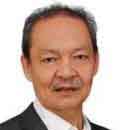Read this in The Manila Times digital edition.
IN the dictionary of urban planning in what is now the Asean region, the word "squatters" was first used and recognized as a social malaise, not in the heart of Tondo but in — of all places — Singapore, now the most economically dynamic place in the region. That was in the mid to late 1960s, a few years after the breakup of the Malaysian Federation and the expulsion of tiny and poor Singapore from the federation. The villages of frail, fragile houses of tin walls that dominated Singapore during the early years post-expulsion were described as they were, without any sugarcoating — squatters.
That was the same impoverished Singapore, along with the city-state's mighty struggle to overcome underdevelopment and poverty, that welcomed Liu Thai Ker upon his return to his native land in the late 1960s, just a few years after obtaining a master's degree in urban planning from Yale University and a brief stint as a New York-based architect for the firm of the legendary I.M. Pei. America had an abundant surplus of architects and urban planners, said the young Liu. Perhaps it was Singapore that needed me more.
Register to read this story and more for free.
Signing up for an account helps us improve your browsing experience.
ContinueOR
See our subscription options.


